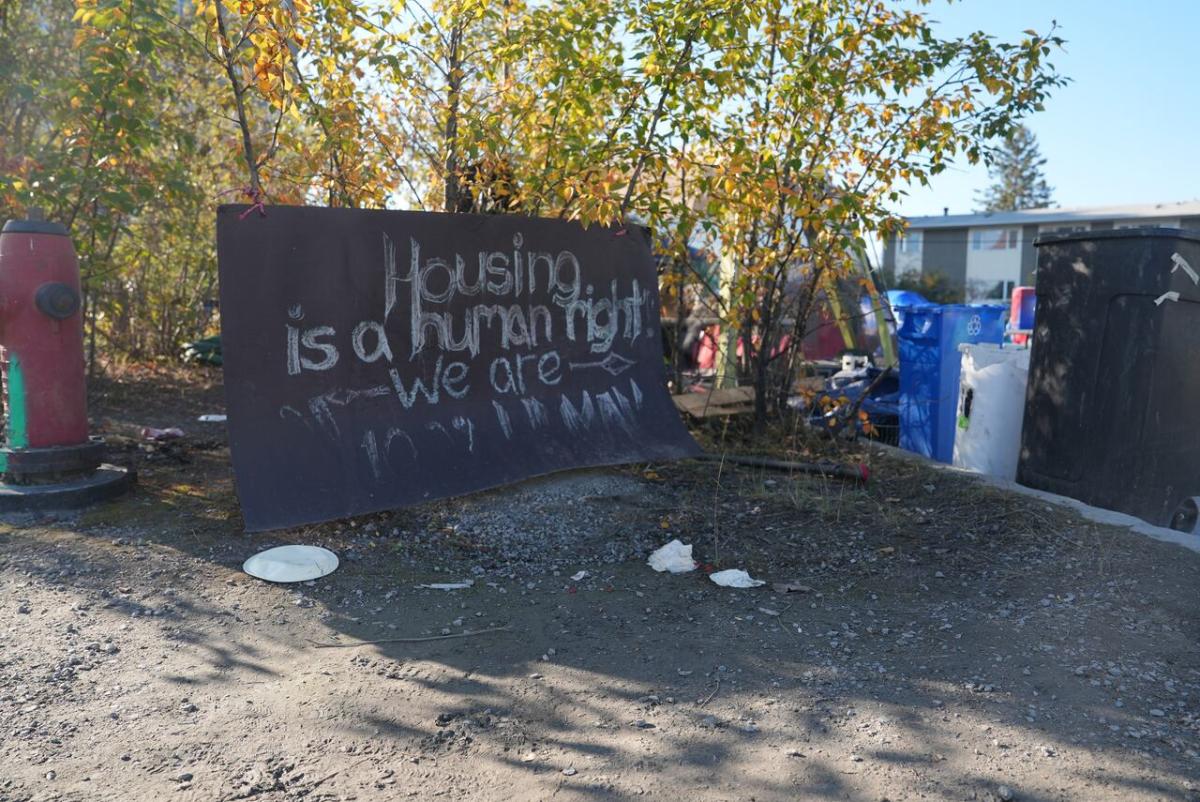Shelter operators in Yellowknife are sounding the alarm about potential shelter overcrowding and exposure deaths, as a longstanding shortage of beds continues as temperatures drop.
The territorial government told CBC on Tuesday that they estimate 30 to 60 people are sleeping outside in Yellowknife right now.
The Yellowknife Salvation Army recently obtained funding from the territorial government to add eight new beds at its men’s shelter, bringing their total capacity from 31 people to 39. Those beds are expected to open in the coming week.
Executive director Tony Brushett said he is grateful for the funding, which will also allow the organization to hire a new staff member to support the additional residents — but said those eight beds won’t even address the current demand.
The men’s shelter is already turning away around 15 people each night, he said, some of whom have resorted to sleeping in dumpsters outside the Salvation Army thrift store. He said he worries one of those people could die during the night, especially as weather gets colder.
“It’s awful to think that this is the way people were sleeping this morning,” he said.
Renee Sanderson, Executive Director of the Yellowknife Women’s Society, said her organization is also struggling to meet the demand at its emergency women’s shelter.
The Yellowknife Women’s Society is funded for ten emergency shelter beds, but Sanderson said it has been at or over capacity almost every night over the last couple of weeks.
She said it’s already having an impact on the quality of service the organization can provide.
“It’s so congested. A lot of our service users come with complex needs and it’s just not a safe environment,” she explained.
Danger of violence, exposure deaths
Sanderson said to address some safety concerns, her organization has banned certain individuals from the shelter because of “destructive behaviour.” They have also stopped allowing shelter users to stay at the facility during the day, in an attempt to ease pressure on staff and transitional housing clients at the women’s centre, she said.
“We don’t want to turn away vulnerable women at night, that’s the last thing we want to do, but because of our current space limitations, we’re constrained in how many we can accommodate.”
Bushett said the Salvation Army men’s shelter won’t expand its capacity by more than the eight beds it has already added because of how serious the violence at the shelter was last year.
But he worries that without shelter beds for all of those who are sleeping outside, people may die.

Tony Brushett, executive director of the Yellowknife Salvation Army, stands in the men’s shelter on June 14, 2024. He estimates at at least 40 or 50 people are still sleeping outside in Yellowknife. (Sarah Krymalowski/CBC)
“We at least have a space for somebody to go,” he said.
“We certainly don’t want to wake up one morning and find that the headlines are that somebody has perished outside simply because there’s nowhere to go.”
Brushett said he wants to see a new shelter bed added in the city for every person who is sleeping outside in Yellowknife right now.
Sanderson also said she would like to see more shelter spots adding in Yellowknife this winter, though ultimately she believes the solution to the problem would be to create more affordable housing options the N.W.T.
Government ‘examining all options’
Both Brushett and Sanderson said they are regularly meeting with officials at the territorial government, and believe government staff are working to find solutions. But Brushett wishes there was more urgency on the part of the territorial government.
“Let’s keep doing what we’re doing, but maybe make it a little bit faster,” he said.
The Department of Executive and Indigenous Affairs is taking the lead on addressing homelessness in the N.W.T. capital right now.
Department spokesperson Adetoyeke Adedipe said in an email that the territorial government is “examining all possible options for expanding shelter capacity,” and pointed to the eight beds that have been added at the Salvation Army men’s shelter.
She also said staff with the territory and local non-profits have also been working individually with unsheltered individuals to help them apply for housing, which she said has resulted in housing for some previously unsheltered residents.
She did not say whether the territorial government expected to find beds for everyone who is currently sleeping outside before temperatures drop further.
Premier R.J. Simpson said he is also advocating for the federal government to fund more transitional housing in the territory, which he believes will alleviate the pressure on shelters.
“We’re trying to move very quickly, and so I’m hopeful in the coming weeks, we’re going to be able to make some announcements,” he told CBC’s Hilary Bird in an interview on Thursday.

